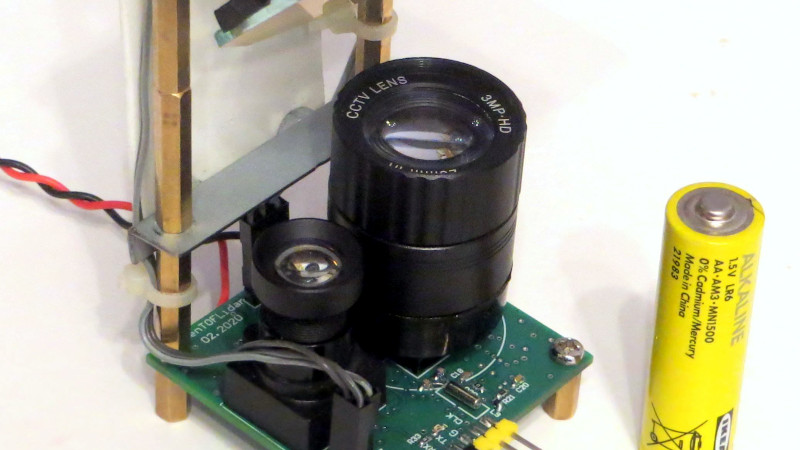For any project there’s typically a trade-off between quality and cost,as higher quality parts, more features, or any number of aspects of a project can drive its price up. It seems as though [iliasam] has managed to avoid this paradigm entirely with his project. His new LIDAR system knocks it out of the park on accuracy, sampling, and quality, and somehow manages to only cost around $114 in parts.
A LIDAR system works by sending out many pulses of light in different directions, measuring the reflections of that light as it returns. LIDAR systems therefore improve with higher frequency pulses and faster control electronics for both the laser output and the receiving data. This system manages to be accurate to within a few centimeters and works up to 25 meters all while operating at 15 scans per second. The key was a high-powered laser module which can output up to 75 watts for extremely short times. More details can be found at this page (Google Translate from Russian).
Another bonus from this project is that [iliasam] has made everything available from his GitHub page including hardware specifications, so as long as you have a 3D printer this won’t take long to produce either. There’s even detailed breakdowns of how the laser driving circuitry works, and how there are safety features built in to keep anyone’s vision from accidentally getting damaged. Needless to say, this isn’t just a laser rangefinder module but if you want to see how you can repurpose those, [iliasam] can show you that as well.
















This one is non movable single point distance measuring device. Aliexpress already has 2D devices for $65 shipped. Other than that it is a nice project.
Yes, there are such LIDARs at the Aliexpress, but what about their max distance and scanning speed?
Actually, it looks like he’s got a nice rotating mirror assembly attached to the top – you can see it in action in here: https://youtu.be/lTPH_Xa9yCk?t=209
This one is 2d device. If you see original article – it uses spinning mirror for scanning.
He’s got this scanning at a much higher rate than anything I’ve seen off the shelf on a hacker budget. That matters a lot for mobile robot applications.
This is the real deal here.
This looks really promising.
I think his closest competition is Hackadays recommendation (Livox) from last year that has good performance (a bit more expensive, but it detects further objects.
We have tried it when it was snowing, in sunshine (this in where most fail) and heavy rain, it has performed well in all cases. The only thing that worries me is that is sounds like a failing hard drive while scanning.
https://hackaday.com/2019/01/22/new-part-day-small-cheap-and-good-lidar-modules/
@iliasam How is your performance in sunshine? I will follow your development forward with interest.
I have not tested my LIDAR in sunshine. There is no IR filter installed now, so it would not work good at the direct sunshine.
Is it possible to tune the accuracy to give like 0.1 mm precision if you limit yourself to around 20 cm range? I wonder if I could rig one up for a CNC router to map the table top and the material surface to a usable amount of precision.
Yes, such laser rangefinders exist: https://www.keyence.com/products/measure/laser-1d/lk-g5000/models/lk-h157/
Search by “Laser Displacement Sensor” words.
Since the linked sensor costs around 3.500 USD, a hack can really save some big bucks here… :)
I think that it is possible to made DIY laser sensor with needed parameters (0.1mm resolution, 20 cm) using triangulation method (like in mentioned Keyence sensor).
I have this project: https://github.com/iliasam/OpenSimpleLidar
Its construction and firmware could be changed to suit this task.
That’s really interesting – thanks for sharing!
Very nice project and interesting writeup too. Respect!
Yes, this. There’s the whole package from board to operational moving-platform navigation. The LIDAR is only a part of it.
This is pretty cool though I’m more exited about all that lidar on a chip announcements recently.